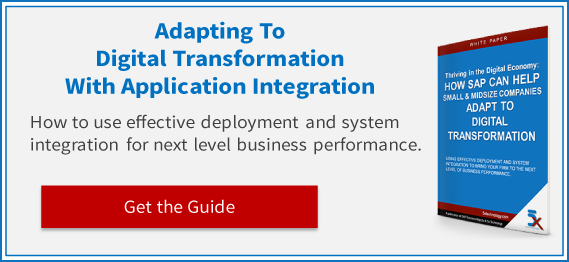Mobile technology has fundamentally changed the nature of business. Now that multiple channels of communication are readily available both for clients and personnel, today's mobile workforce is a new possibility that promises to become the standard for globally-aware companies around the world.
As we've seen from many companies, workforce automation proves to provide rapid return on investment. With mobile workforce management, businesses can address appointment scheduling, vehicle maintenance, and increase productivity.
When unpacking what a mobile workforce is, we must first outline the unique qualities that it holds for businesses that implement it:
- Visibility gains for your business. Previously opaque operations become transparent to management, helping them to plan better and react quickly to conditions in the field.
- Improved productivity via mobile workforce management operations. Data gathered during employee tasks can be used to streamline actions and reduce distractions as manual tasks are automated.
- Technicians can be seamlessly connected using applications based in the cloud. Better communication means better coordination among personnel, noticeably improving the services that clients receive.
- There is a reduction in operational field costs. Once operations are more efficient with workforce scheduling, invoicing, and work orders businesses will save both time and money.
- Efficient scheduling and superior customer service. Companies can quickly fulfill customer expectations of immediate service with the elimination of schedule gaps.
To find out what enables all of these benefits of a mobile workforce requires an understanding of the essential nature of the software.
What is a “Mobile Workforce”?
At its heart, the mobile workforce is an organizational structure by which employees in vastly different areas of the world come together using the internet. They use apps, email, video, and phone calls to coordinate efforts, service clients, and provide accountability to higher-ups.
When a company fully embraces the potential of the mobile workforce, it can achieve goals out of reach for any business that remains tied to a single geographical location.
What does it mean when a company actualizes their mobile workforce?
- They provide crucial support for technicians that must service clients promptly and perform tasks quickly and accurately.
- Managers will have at their fingertips real-time data to measure your KPIs. And, making visible the entire operation of their department. They will be able to identify areas that can be made more efficient and will have the knowledge of which direction to take for important decisions.
- Field service apps based in the cloud enable the improvement of customer satisfaction. Improved customer satisfaction is the primary driver of company growth.
- It becomes possible to manage and react to all of the moving parts of the business outside of the central office. Physical location is no longer a determinant of who is and isn't in tune with company operations.
The mobile workforce may be uncommon now, but its advantages mean that shortly it will become a feature of every company that hopes to compete globally. Not only will it improve the bottom line of the companies that implement it, but it will also be the key determining factor for businesses who value the level of service they provide for customers.
Why Mobile Workforce Matters for Customer Service
Field technicians operating under the mobile workforce model can leverage improved annual gains, more efficient use of time, and better customer scheduling to deliver a high return on the initial investment.
Also, these employees are then able to drive a customer service experience unparalleled by companies that adhere to older systems of personnel management. This key benefit is what makes adoption of the mobile workforce inevitable.
The challenge is to learn how to cultivate the advantages of the mobile workforce while avoiding the pitfalls. The company must discover new ways of encouraging and enabling productivity among personnel who are no longer being directly monitored by superiors. Providing managers with visibility reports and real-time data allows them to keep track of departmental operations, helping them to stay in touch with field operations.
Meanwhile, automation of tasks are called for as companies are on a quest to become more efficient. The time that personnel spends, for example, adding up receipts for travel and expenses and managing the scheduling and attendance of meetings can be better spent in achieving the core tasks essential to increasing the bottom line, and employee and customer satisfaction.
What can the company that hopes to implement a mobile workforce do to solve these challenges? The answer lies in a new category of software known as mobile workforce management software.
The Future of the Mobile Workforce
Mobile workforce management software has recently emerged as the core application that allows a company with a mobile workforce to take full advantage of its power. When the software is integrated with your customer data, it provides unprecedented visibility into mobile worker activities, which can lead to better customer service as managers learn what resources employees require to fulfill clients' wishes, and how to make best those resources available when they are needed.
Mobile workforce management software also makes it much easier for manual tasks to be optimized and automated. When personnel has more time to dedicate to their core tasks, this signals a rise in employee productivity and a corresponding increase in the company's bottom line.
Once your business decides to invest in the mobile workforce and the technologies that make it possible, not only will your team better meet their goals, but they are likely to exceed them consistently. A mobile workforce allows your company to set itself apart from competitors and become a contender on an international scale.
What does this all mean for your business? It means, quite simply, that the time to adopt a mobile workforce strategy is now. We predict that the mobile workforce will become ever more ubiquitous, along with the technologies associated with it. Get ahead of the curve by exploring your options for implementing a mobile workforce today.
Download our complimentary solution-based SAP White Paper Thriving in the Digital Economy by Adapting to Digital Transformation, and learn more about how the right data connectivity and dashboard deployment can help manage business performance.




